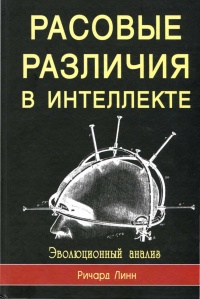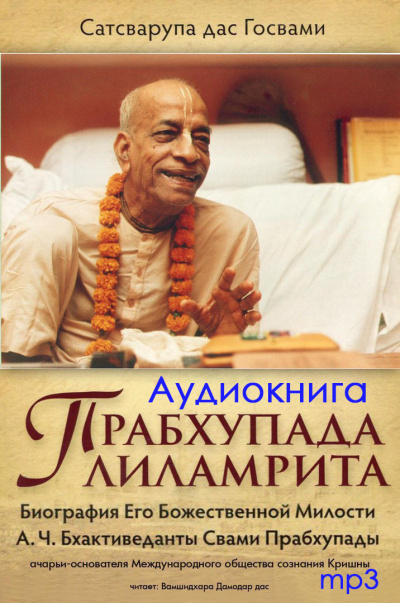Читать книгу - "Расовые различия в интеллекте. Эволюционный анализ - Ричард Линн"
Аннотация к книге "Расовые различия в интеллекте. Эволюционный анализ - Ричард Линн", которую можно читать онлайн бесплатно без регистрации
De Lacey, P. R. (1972). A relationship between classificatory ability and verbal intelligence. International Journal of Psychology, 1, 243–246.
De Lacey, P. R. (1976). Lifeways and cognitive performance in Australia and the United States. In G. E. Kearney and D. W. McElwain (Eds.). Aboriginal Cognition. Canberra: Australian Institute of Aboriginal Studies.
De Lemos, М. M. (1969). The development of the concept of conservation in Aboriginal children. International Journal of Psychology, 4, 255–269.
De Lemos, М. M. (1979). Aboriginal Students in Victoria. ACER Research Monograph No. 3. Melbourne: ACER.
De Lemos, М. M. (1989). Standard Progressive Matrices: Australian Manual Camberwell, Vic.: Australian Council for Educational Research.
De Maeyer, E., and Adiels-Tegman, M. (1985). The prevalence of anaemia in the world. World Health Statistical Bulletin, 38, 302–316.
Dennis, W. (1957). Performance of Near Eastern children on the Draw-a-Man test. Child Development, 28, 427–430.
Dennis, W., and Najarian, P. (1963). Development under environmental handicap. In W. Dennis (Ed.). Readings in Child Psychology. Englewood Cliffs: Prentice-Hall.
Dent, G. R. (1937). An investigation into the applicability of certain perforomance and other mental tests to Zulu children. In E. G. Malherbe (Ed.). Report of New Education Conference. Cape Town, p. 456.
De Silva, H. A., and Gunatilake, S. B. (2002). Mini Mental State examination in
Sinhalese: a sensitive test to screen for dementia in Sri Lanka. International Journal of Geriatric Psychiatry, 17, 134–139.
Diamond, J. (1997) Guns, Germs and Steel. New York; Random House.
Dickenson, L., Hobbs, A., Kleinberg, S. М., and Martin, P. J. (1975). The Immigrant School Leaver. Windsor, UK: National Foundation for Educational Research.
Dillehay, T. D., and Collins, М. B. (1988). Early cultural evidence from Monte Verde in Chile. Nature, 332, 150–152.
Dixon, E. J. (1999). Bones, Boats and Bison. Albuquerque, NM: University of New Mexico Press.
Dobbing, J., and Smart, J. L. (1974). Vulnerability of developing brain and behaviour. British Medical Bulletin, 30, 164–168.
Dodge, P. R., Palkes, H., Fierro-Benitez, R., and Ramirez, I. (1969). Effect on intelligence of iodine in oil administration to young adult Andean children. In J. B. Stanbury (Ed.). Endemic Goitre. Washington, D.C.: Pan American Health Organization.
Dolan, С. V, and Hamaker, E. (2001). Investigating black-white differences in psychometric IQ: multi-group factor analysis and a critique of the method of correlated vectors. In F. Columbus (Ed). Advances in Psychological Research, vol. 6, Huntington: Nova Science.
Domstreich, M. D. (1973). Food habits of early man and the balance between hunting and gathering. Science, 179, 306.
Drennan, M. R. (1937). A Short Course on Physical Anthropology. Cape Town: Mercantile-Atlas.
Driessen, G. W. (1997). Islamic primary schools in The Netherlands: the pupil’s
achievement levels, behavior and attitudes and their parents’ cultural backgrounds. Netherlands[14] Journal of Social Sciences, 33, 42–75.
Drinkwater, B. A. (1976). Visual memory skills of medium contact Aboriginal children. Australian Journal of Psychology, 28, 37–44.
Du Bois, W. E. B. (1939). Black Folk: Then and Now. New York: Henry Holt.
Du Chateau, P. (1967). Ten point gap in Maori aptitudes. National Education, 49, 157–158.
Dunbar, R. I. (1992). Neocortex size as a constraint on group size in primates. Journal of Human Evolution, 20, 469^493.
Dunn, J. T. (1994). Societal implications of iodine deficiency and the value of its prevention. In J. B. Stanbury (Ed.). The Damaged Brain of Iodine Deficiency. New York: Cognizant Communication Corporation.
Dunn, L. М. (1988). Bilingual Hispanic Children on the U. S. Mainland. Honolulu: Dunn Educational Services.
Dunbrow, E. H., Schaefer, B. A., and Jimerson, S. (2002). Diverging a paths in rural Caribbean children. School Psychology International, 155–168.
Dyck, M. J. (1996). Cognitive assessment in a multicultural society: comment on Davidson. Australian Psychologist, 31, 66–69.
Edwards, L. D. (1970). Malnutrition and disease in pre-school Aboriginal children in the Walgett area of N. S. W. Medical Journal of Australia, 2, 1007–1010.
Edwards, L. D., and Craddock, L. J. (1973). Malnutrition and intellectual de velopment. Medical journal of Australia, 5 May, 880–884.
Eells, W. C. (1933). Mental ability of the native races of Alaska. Journal of Applied Psychology, 17,417–438.
Elkin, A. P. (1964). The Australian Aborgines. Sydney: Angus and Robertson.
El-Mneizel, A. F. (1987). Development and psychometric analysis of a Jordanian adaptation of the Kaufman Assessment Battery for Children. Ph.D. dissertation, University of Alabama.
Evans, E. М., Schweingruber, H., and Stevenson, H. W. (2002). Gender differences in interest and knowledge acquisition: the United States, Taiwan, and Japan. Sex Roles, 47, 153–167.
Eyferth, K. (1961). Leistungen verschiedener Gruppen von Besatzungskindem im
Hamburg Wechsler Intelligenz Test fur Kinder. Archive fur die Gesamte Psychologie, 113, 222–241.
Eysenck, H. J. (1971). Race, Intelligence and Education. London: Temple Smith.
Eysenck, H. J. (1981). Intelligence: The Battle for the Mind. London: Pan. Eysenck, H. J. (1995). Genius. Cambridge, UK: Cambridge University Press.
Eysenck, H. J. (1998). Intelligence: A New Look. New Brunswick, NJ: Transaction.
Eysenck, H. J., and Schoenthaler, S. J. (1997). Raising IQ with vitamins and minerals. In R. J. Sternberg and E. Grigorenko (Eds.). Intelligence, Heredity and Environment. Cambridge, UK: Cambridge University Press.
Fahmy, M. (1964). Initial exploring of the intelligence of Shilluk children. Vita Humana, 1, 164–177.
Fahrmeier, E. D. (1975). The effect of school attendance on intellectual development in Northern Nigeria. Child Development, 46, 281–285.
Falconer, D. S. (1960). Introduction to Quantitative Genetics. London: Longman.
Farron, O. (1966). The test performance of coloured children. Educational Research, 8, 42–57.
Прочитали книгу? Предлагаем вам поделится своим впечатлением! Ваш отзыв будет полезен читателям, которые еще только собираются познакомиться с произведением.
Оставить комментарий
-
 Гость Алла10 август 14:46
Мне очень понравилась эта книга, когда я её читала в первый раз. А во второй понравилась еще больше. Чувствую,что буду читать и перечитывать периодически.Спасибо автору
Выбор без права выбора - Ольга Смирнова
Гость Алла10 август 14:46
Мне очень понравилась эта книга, когда я её читала в первый раз. А во второй понравилась еще больше. Чувствую,что буду читать и перечитывать периодически.Спасибо автору
Выбор без права выбора - Ольга Смирнова
-
 Гость Елена12 июнь 19:12
Потрясающий роман , очень интересно. Обожаю Анну Джейн спасибо 💗
Поклонник - Анна Джейн
Гость Елена12 июнь 19:12
Потрясающий роман , очень интересно. Обожаю Анну Джейн спасибо 💗
Поклонник - Анна Джейн
-
 Гость24 май 20:12
Супер! Читайте, не пожалеете
Правила нежных предательств - Инга Максимовская
Гость24 май 20:12
Супер! Читайте, не пожалеете
Правила нежных предательств - Инга Максимовская
-
 Гость Наталья21 май 03:36
Талантливо и интересно написано. И сюжет не банальный, и слог отличный. А самое главное -любовная линия без слащавости и тошнотного романтизма.
Вторая попытка леди Тейл 2 - Мстислава Черная
Гость Наталья21 май 03:36
Талантливо и интересно написано. И сюжет не банальный, и слог отличный. А самое главное -любовная линия без слащавости и тошнотного романтизма.
Вторая попытка леди Тейл 2 - Мстислава Черная





